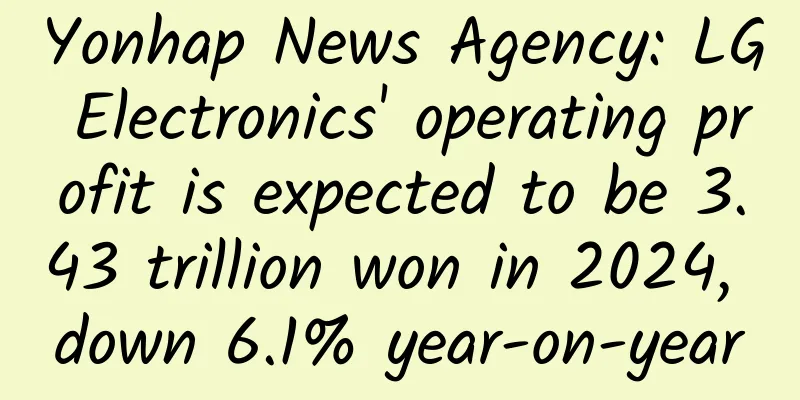Alibaba enters private banking market, BAT now lacks one

|
Yesterday afternoon, the China Banking Regulatory Commission's official website issued a reply approving Alibaba Small and Micro Financial Services Group and other sponsors to set up Zhejiang MyBank. This is the second approval since three private banks were approved to set up in July. According to the approval document, the sponsors of MYbank include Xiaowei Financial Services Group, Shanghai Fosun Industrial Technology Development Co., Ltd., Wanxiang Sannong Group Co., Ltd., Ningbo Jinrun Asset Management Co., Ltd., etc., with shareholding ratios of 30%, 25%, 18%, and 16% respectively. This equity ratio is exactly the same as Tencent 's 30% stake in Qianhai Weizhong Bank at the time. So, it seems that the rumored equity dispute is not true. So, why did Ali Bank slow down by two months? How is its gameplay different from "Tencent Bank"? What does Ali hope "Ali Bank" can bring to them? Where is the “Ali Bank” card? As the main initiator, Alibaba Small and Micro Financial Services Group looks at the Zhejiang MyBank under construction in this way. "MYbank is an Internet commercial bank. It will be based on the Internet, make full use of Internet ideas and technologies, and use big data analysis to serve grassroots consumers and small and micro enterprises, and expand the boundaries of online business. MYbank, born from the Internet, hopes to bring more innovative services to the real economy and people's daily lives, and on this basis, improve the Internet financial integrity system and let credit create wealth." There are three things revealed in this passage. First, it will be an online bank that relies entirely on the Internet to conduct business and may not have offline physical branches. Second, the target customers are more small businesses and individual operators within the Taobao ecosystem (providing online credit loans), as well as consumers who shop online (providing consumer loans). Third, it hopes to improve existing user data through banks and better build its own credit reporting system. Simply put, Ali Bank is an online bank without offline branches. Its main function is to provide financial support to people in the ecosystem by absorbing deposits. And unlike Xiaodai Company, it does not have a lending limit of 10 times the registered capital. It can lend as much as the deposit and reserve. The pattern seems very clear, so why didn't Alibaba submit a plan for the first batch? And why did it submit a second batch of plans in just two months? I think it is largely because Alibaba has made new progress on two issues that bothered it. First, Alibaba's plan to build a pure online bank conflicts with the existing regulations that users must bring their ID cards to a branch to open an account in person. If the regulations remain unchanged, then you can only set up branches offline. Then you only open branches in Hangzhou, and only users in Hangzhou can open this account. If you open branches nationwide, even if you only open one in each prefecture-level city, what is the difference between this and a traditional bank? In fact, there are many ways to solve the problem. Uploading ID photos and selfies is not difficult. The key lies in how big a loophole the regulators can open. However, since Alibaba has started this project, this issue may be resolved in the short term. Secondly, Ali Bank is not good news for Alipay and the many banks that work with Alipay. It is like a company in the downstream of the industrial chain, which originally had a division of labor and a pleasant cooperation with the upstream company. Now it suddenly intervenes and tests the waters upstream. No matter how evasive the concept of Ali being a bank is, as long as it involves attracting deposits, other banks will definitely have ideas. Therefore, it is only a matter of time before a fight breaks out. Since Alibaba dares to launch the product, perhaps it has made relatively thorough preparations. How to play “Tencent Bank”? Tencent Bank has been very busy recently. The first batch of private banks, poaching Ping An and directly recruiting hundreds of positions on Lagou, have been given a lot of "halo" by the outside world that the Internet will subvert traditional banks. But in fact, Tencent is unusually low-key in information disclosure, and the reason is unknown. Maybe they themselves have not figured out how to play. But judging from recent reports, the outline of Tencent Bank has gradually become clear. Unlike Alibaba's model of small deposits and small loans, Tencent's original design model was called large deposits and small loans, which means making deposits above a certain limit and at the same time issuing small loans to related targets. Ali Small Deposits and Small Loans are very clear, that is, they mainly provide deposit products below 200,000 yuan and loan products below 5 million yuan. However, Tencent Bank's products are still vague. What is big deposits and small loans? To put it simply, it means taking advantage of high-net-worth depositors and providing credit resources to small and micro enterprises or individuals. Tencent has always said that Internet finance can reduce operating costs through Internet platforms and technologies; secondly, it can use Internet-related technologies, such as big data, to develop small and micro markets while reducing bank credit risks. But in the final analysis, this business model must first solve the problem of making money before it can be said to be different from traditional banks. Therefore, in the final analysis, the core of Tencent Bank is still these two issues: where to find and maintain high-net-worth depositors? And where to find suitable loan targets? Let’s first look at the non-technical positions that Tencent Bank is recruiting on Lagou. As we all know, Tencent is a company based on social relationships. The data it obtains may not be inferior to Alibaba in terms of volume, but it is obviously weak in terms of consumption data. The risk of financing small and micro enterprises for banks is actually very large. If we cannot use systematic data mining to segment and price customer risks, and simultaneously implement real-time monitoring and preventive risk management measures, online risk assessment will be very difficult. Therefore, supply chain finance and corporate credit investigation are not easy for Tencent to do. Judging from the positions Tencent recruits, Tencent Bank's business processes, risk control systems, and organizational structures in the banking business are more borrowed from the credit card departments of existing offline traditional banks. They don't seem to be too keen on To B-side things. This seems to be more clearly seen from their executive team. The chairman of Shenzhen Qianhai WeBank is Gu Min, former executive director and deputy general manager of Ping An Group. Qin Hui, former director of the Policy and Regulations Department (Business Innovation and Management Department) of the Shenzhen Banking Regulatory Bureau, is now the vice president of WeBank. Huang Liming, former deputy general manager of Lufax of Ping An Group, is the head of the preparatory group of WeBank. Judging from their resume, they have a very impressive record in consumer finance. So whether from the existing resources or future plans, it can almost be determined that unlike Alibaba, which focuses more on supply chain finance for enterprises within the ecosystem, Tencent Bank will be more inclined to consumer finance in terms of loan targets, which also forms a step-by-step coordination with JD.com's consumer finance strategy a few days ago. If you are in Shenzhen, according to Financial Weekly, last month, we learned from a credit manager of Ping An Bank that WeBank is poaching a large number of "Xinyidai" staff from the Consumer Finance Center of the Retail Business Department of Ping An Bank, including credit managers and back-end IT staff of the Operations and Technology Center. "WeBank recently poached several credit managers who performed well at Xinyidai from Ping An, and also hired several IT developers and maintenance staff from backend. It is said that their salaries have increased significantly." What is Xinyidai? It is an unsecured loan issued by Ping An Bank to people with stable and continuous wages, with monthly salary income as the basis for loan amount determination, for personal consumption. The loan amount is approved based on the borrower's income, generally between 20,000 and 500,000. In summary, consumer loans are the path chosen by Tencent. The cooperation and coordination with JD.com and the amount of resources available on Tencent may directly affect the final result of this project. However, given Tencent's tone, it has to find its own way and everything depends on itself. In the consumer loan market, which already has many options such as traditional banks, private banks, and consumer finance companies, Tencent Bank's path is not easy. Finally, two of the three BAT companies have already joined the market. Do you think Baidu will intervene? As a winner of Toutiao's Qingyun Plan and Baijiahao's Bai+ Plan, the 2019 Baidu Digital Author of the Year, the Baijiahao's Most Popular Author in the Technology Field, the 2019 Sogou Technology and Culture Author, and the 2021 Baijiahao Quarterly Influential Creator, he has won many awards, including the 2013 Sohu Best Industry Media Person, the 2015 China New Media Entrepreneurship Competition Beijing Third Place, the 2015 Guangmang Experience Award, the 2015 China New Media Entrepreneurship Competition Finals Third Place, and the 2018 Baidu Dynamic Annual Powerful Celebrity. |
>>: Why don’t we find it annoying when Apple’s iOS upgrade rate is so high?
Recommend
Didn't understand Oppenheimer? Here are some hidden Easter eggs!
Have you seen Nolan's Oppenheimer? Even if yo...
What information is needed to register a mini program? What information is needed to apply for a mini program?
Q: What information is needed to register the min...
Use the okhttp framework to implement user login including verification code and maintain session operation (Part 1)
1. What problem does this article solve and what ...
May 2024 "Science" Rumor List: Will QR codes be used up soon? Can "Physical Exam Magic Tool" improve scores?
The May 2024 "Science" Rumor List is re...
If skin care products have good ingredients, will they definitely be effective?
Review expert: Li Xixi, PhD in Biomedical Enginee...
Attention! A bee is approaching you...
On a lazy afternoon, the visit of a bee by the wi...
A frontline developer's thoughts on App architecture and componentization
Preface Regarding App architecture and componenti...
12 Practical Ways to Prevent Your App from Becoming a Zombie
Are you familiar with the concept of "zombie...
The 14th Honda China Energy Conservation Competition was successfully held
From November 25th to 26th, the 2023 14th Honda C...
Can tiny moss help realize “interstellar migration”?
Produced by: Science Popularization China Author:...
Are these common foods like "scraping your liver with a steel wool" the same as eating one bite?
Expert of this article: Li Zhao, Chief Physician ...
Earn 10,000 yuan a day from illegal income? What are some ways to make money quickly in a day?
He said he has 760,000 QQ groups, but QQ groups d...
5 core steps to acquire app users
[[132832]] Many startups are happy to try to find...
How to use new media to achieve low-cost marketing, brand promotion and operations?
Startups face many problems, such as scarce resou...
Use these 3 methods to impress your users
Before starting the article, let's do a small...









